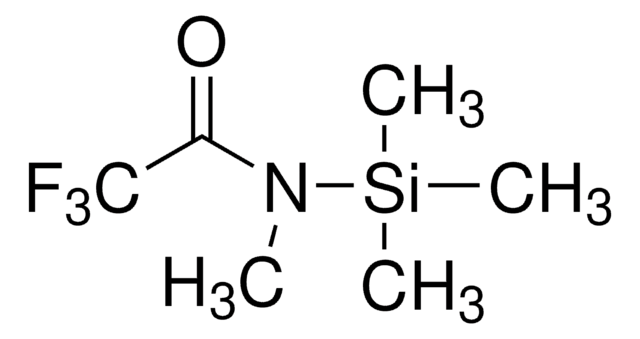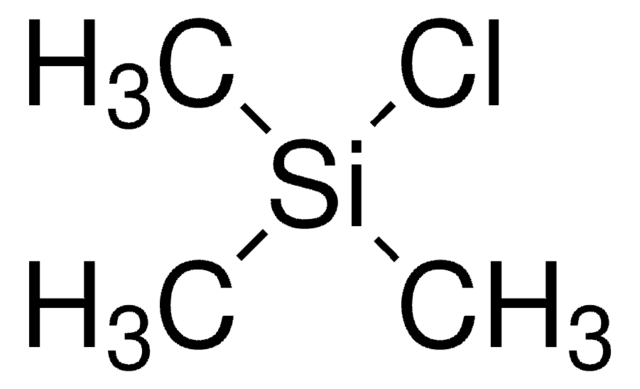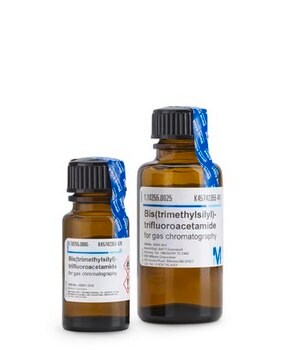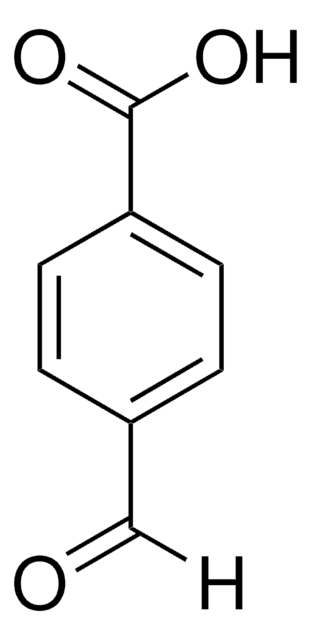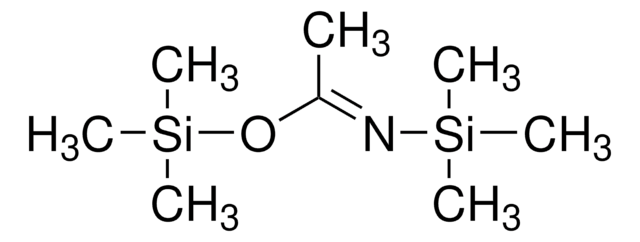155195
N,O-Bis(triméthylsilyl)trifluoroacétamide
≥99%
Synonyme(s) :
BSTFA
About This Item
Produits recommandés
Qualité
synthesis grade
Niveau de qualité
Essai
≥99%
Forme
liquid
Indice de réfraction
n20/D 1.384 (lit.)
pb
45-50 °C/14 mmHg (lit.)
Densité
0.969 g/mL at 25 °C (lit.)
Groupe fonctionnel
fluoro
Chaîne SMILES
C[Si](C)(C)O\C(=N\[Si](C)(C)C)C(F)(F)F
InChI
1S/C8H18F3NOSi2/c1-14(2,3)12-7(8(9,10)11)13-15(4,5)6/h1-6H3/b12-7+
Clé InChI
XCOBLONWWXQEBS-KPKJPENVSA-N
Vous recherchez des produits similaires ? Visite Guide de comparaison des produits
Catégories apparentées
Description générale
BSTFA is a silylating agent used in the synthesis of 4-Quinolones.
Application
Produit(s) apparenté(s)
À utiliser avec
Mention d'avertissement
Warning
Mentions de danger
Conseils de prudence
Classification des risques
Eye Irrit. 2 - Flam. Liq. 3 - Skin Irrit. 2
Code de la classe de stockage
3 - Flammable liquids
Classe de danger pour l'eau (WGK)
WGK 3
Point d'éclair (°F)
93.2 °F
Point d'éclair (°C)
34 °C
Équipement de protection individuelle
Faceshields, Gloves, Goggles, type ABEK (EN14387) respirator filter
Faites votre choix parmi les versions les plus récentes :
Déjà en possession de ce produit ?
Retrouvez la documentation relative aux produits que vous avez récemment achetés dans la Bibliothèque de documents.
Les clients ont également consulté
Global Trade Item Number
| Référence | GTIN |
|---|---|
| 155195-500G | 4061833498675 |
| 155195-100G | 4061837789441 |
| 155195-25G | 4061838741950 |
| 155195-5G | 4061837789458 |
Notre équipe de scientifiques dispose d'une expérience dans tous les secteurs de la recherche, notamment en sciences de la vie, science des matériaux, synthèse chimique, chromatographie, analyse et dans de nombreux autres domaines..
Contacter notre Service technique
